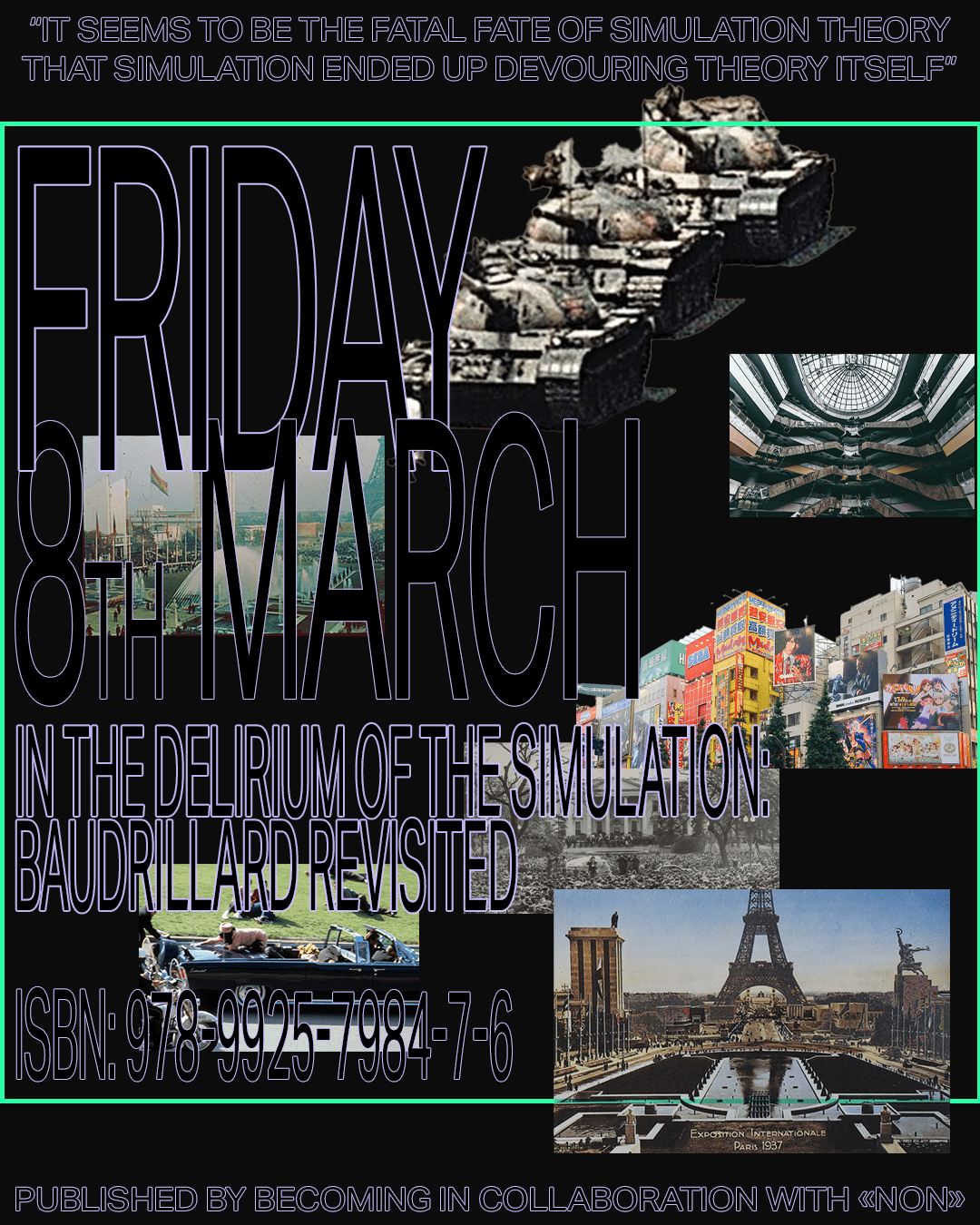Simulation 2
Simulation 2
Let’s take a closer look at Baudrillard’s concept of simulation. Simulation, as Rex Butler emphasised in his book in defence of the real in Baudrillard, does not imply the loss of reality, but is to be understood as its very possibility. What disappears is, as already described, at best, the reality principle, not reality (Butler, 1999: 23-24). The function of simulation is precisely not to abolish or duplicate reality, as is often assumed by various commentators, but on the contrary to generate it hyperactively and excessively and/or to realise it in a distorted, even artificial way; indeed to make it more real than real, insofar as simulation permanently generates reality effects. In his book The Perfect Crime, Baudrillard writes: “we indulge in the illusion that the real is what we lack most, but on the contrary; reality has reached its peak” (Baudrillard, 1992a: 103). By means of operative technical apparatuses and systems, we have achieved such a degree of reality and objectivity that one could even speak of a surplus of reality. There is no longer any possible negation or transgression, since we are caught up in the excess of reality itself, indeed we have already been driven beyond its end. Also, there would no longer be any negative energy that could arise from the imbalance between the ideal and reality, which is the essence of the classical critique of ideology, but only a positivist hyper-reaction, which arises from the quantitative superposition of ideal and reality, from which an ideal positivity of reality emerges. With the simulation, the interchangeability of binary codes such as truth/untruth, beauty/ugliness, left/right politics and nature/culture is endlessly generated in and through an ecstasy of reality. This concerns both the ecstasy of differentiation on the level of signs and the dwindling of human discernment. In the order of a semiology of representation, reality is accorded a kind of ontological priority that is prior. In the order of simulation, models and signs generate reality and conceal the truth that there is none. Reality and truth emanate from the codes and models of hyperreality. Identities and differences are modulated according to the model and multiply into infinity. In hyperreality, any distinction between the real and the imaginary is abolished, only leaving room for the orbital return of models, and the simulated generation of distinction and difference.
Orbital is a spatial metaphor that conveys the feeling of floating in an empty space in which there is no other gravitational reference point. The simulated generation of difference refers to the modelled quality of the resulting difference. Now think of quantum computers that do not calculate with bits (0s and 1s), but with quantum mechanical objects or spin systems with binary base states that can overlap. In theory, the quantum switches, qubits, can be both 0 and 1 at the same time. Quantum physics experiments (analogue quantum computers only apply to these experiments and are not universal) realise calculations with which all possible (multiplicative) combinations of the states of the qubits are executed in parallel. With the possibility of superposition or superimposition, artificial realities are not only generated infinitely, but they can also superimpose and interact simultaneously and multiplicatively. The simulation delimits the simulation multiplicatively.
Simulation does not imitate reality; rather, hyperreality is about the simulation of reality by means of the production and multiplication of its appearance, but not only its appearance, as Žižek (1997: 92) assumes, but even more about the generation of signs, codes, forms and models that materialise the appearance in a certain way. A simulation takes place when a model or representation precedes the reality of which it purports to be a model or representation; simulations produce a new artificial reality itself, rather than merely modelling an existing reality. Simulation disillusions and denaturalises reality precisely by means of artificial processes that are responsible for their own hyper-reality. Both the simulated hyper-reality and, increasingly, the real-reality are now effects, or mere games and calculations of a system of models and codes that are now also the real-reality, at least the real that the simulation itself generates (not the real as the limit of the system). It is not just that reality and illusions of reality coincide at the level of first-order observation, as systems theory says—like seeing the sun rise and not being able to help but see it that way even though you know you are mistaken—but that second-order observation is also involved. The observing system, which observes that it itself and other systems perform operations of observation, generates reality in a game of distinctions of distinctions (designating and distinguishing observations), so that the given is not fixed, but is generated in fluid flows. As can easily be seen on the internet, the system always operates technically with contingency and creates a real unreality, i.e. simulation. However, it is also important to note that certain discourses cannot be observed at all. The difference between communism on the one hand and the star system on the other, for example, lies in the fact that we have the technical means to observe the latter as an object of knowledge, whereas communism is a historical idea that refers to the future. It cannot be observed.
you can order here: https://becomingpress.myshopify.com/products/in-the-delirium-of-the-simulation-baudrillard-revisited-by-achim-szepanski

